BuildWind simulations enhance the design of safer, more energy-efficient healthcare buildings by:
- ensuring compliance with air quality standards,
- predicting concentrations of pollutant and respiratory droplets,
- assessing infection risks,
- defining effective mitigation strategies.
Creating better, safer healthcare environments requires moving beyond standard protocols to gain a deeper, predictive understanding of facility dynamics. Leveraging high-fidelity Computational Fluid Dynamics (CFD) simulations, we can transform invisible environmental factors such as complex airflow patterns, temperature variations, and airborne contaminant potential spreading into actionable data. These data are used to accurately assess indoor air quality, thermal comfort, and the risk of airborne infection transmission. This predictive capability enables targeted optimization of HVAC systems, ensuring healthcare environments are not only comfortable but actively mitigating infection risks.
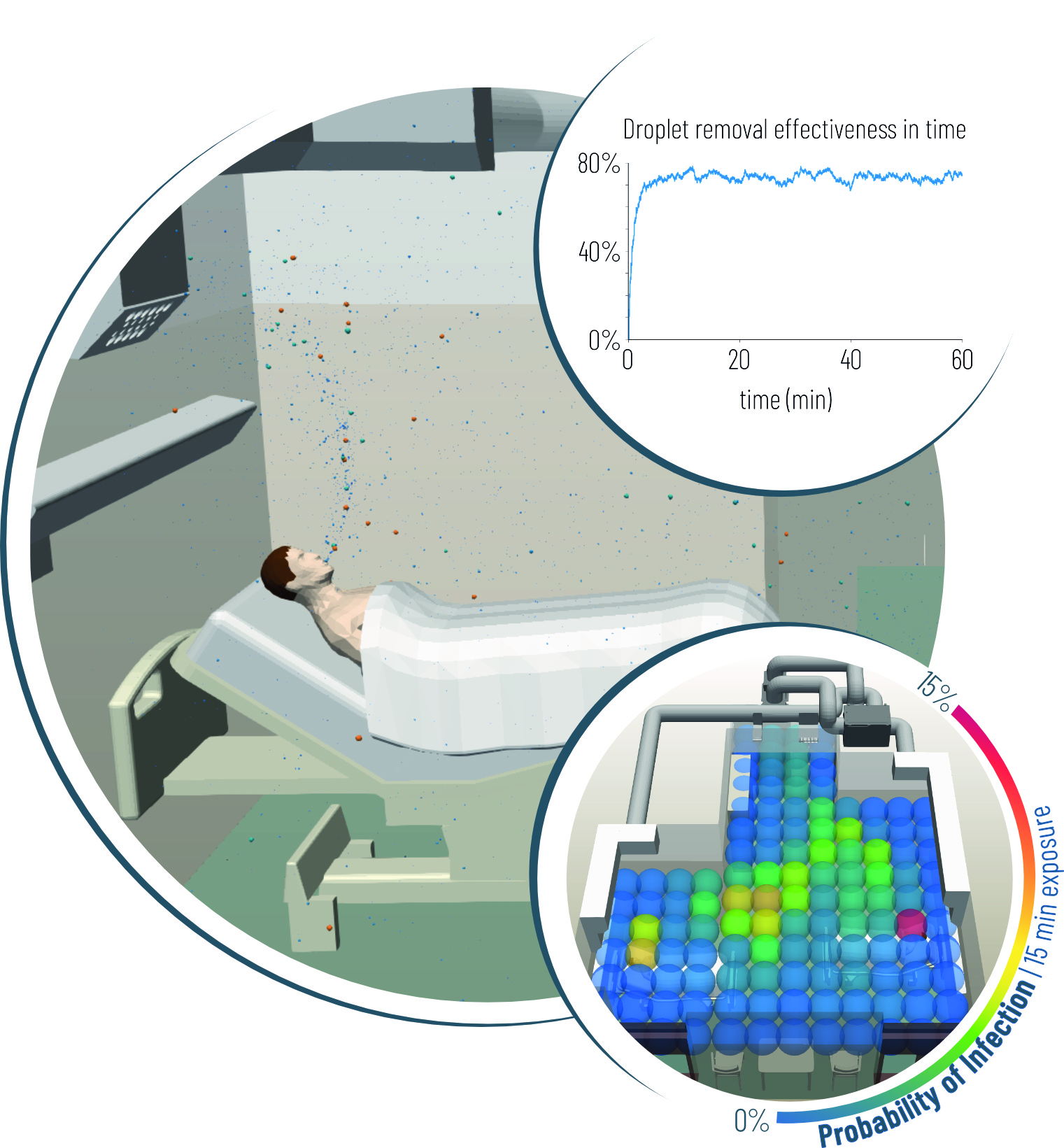

For specialized areas like operating theatres, assessment tool like CFD simulations are vital for validating compliance with stringent standards like ISO 14644, verifying the effectiveness of cleaning protocols and airflow management in maintaining ultra-clean conditions.
“Computational Fluid Dynamics (CFD) modeling can be used in designing a cleanroom or clean air device by providing information on their likely airflow patterns and allowing the designer to optimize the design and achieve a more effective and efficient installation” [1].
In operating theatres an optimal flow injection by the ventilation system is required to ensure the effective removal of airborne contaminants from the surgical field and to minimize the pressure drops and energy consumption.
CFD can assess the ability of operating theatre ventilation system to
- deliver a laminar flow,
- create a washing effect over the operating table,
- ensure thermal comfort.


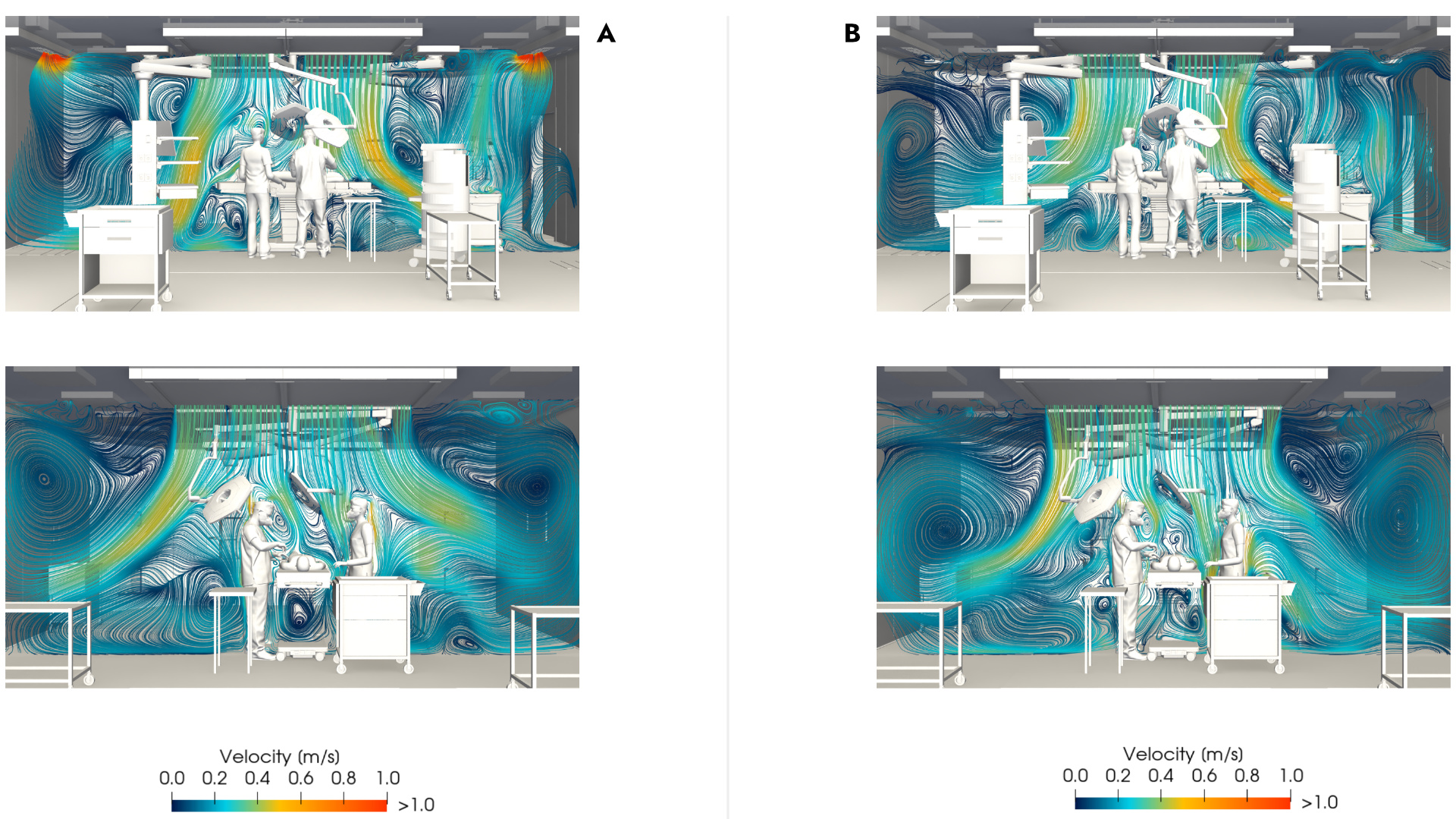
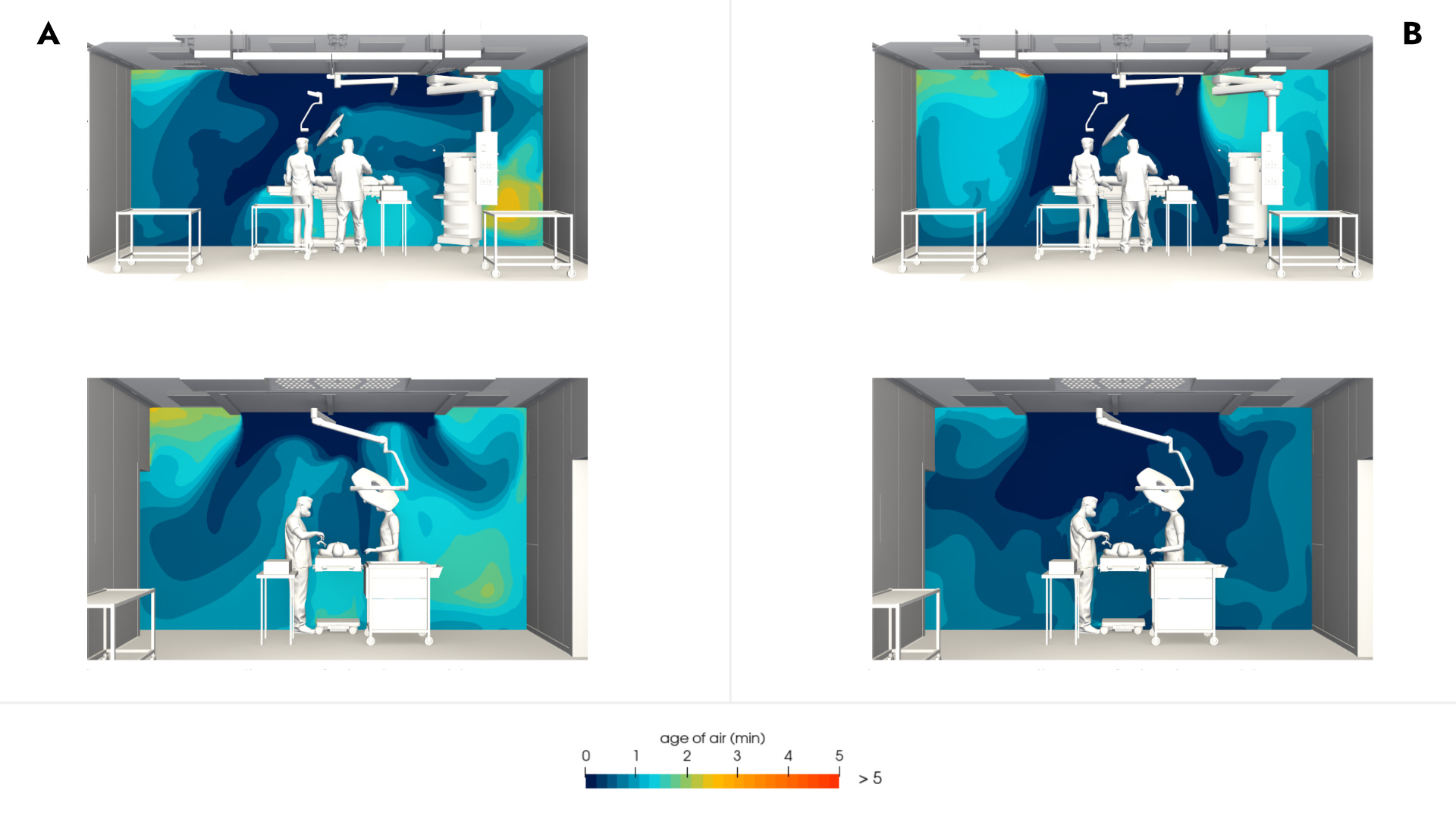
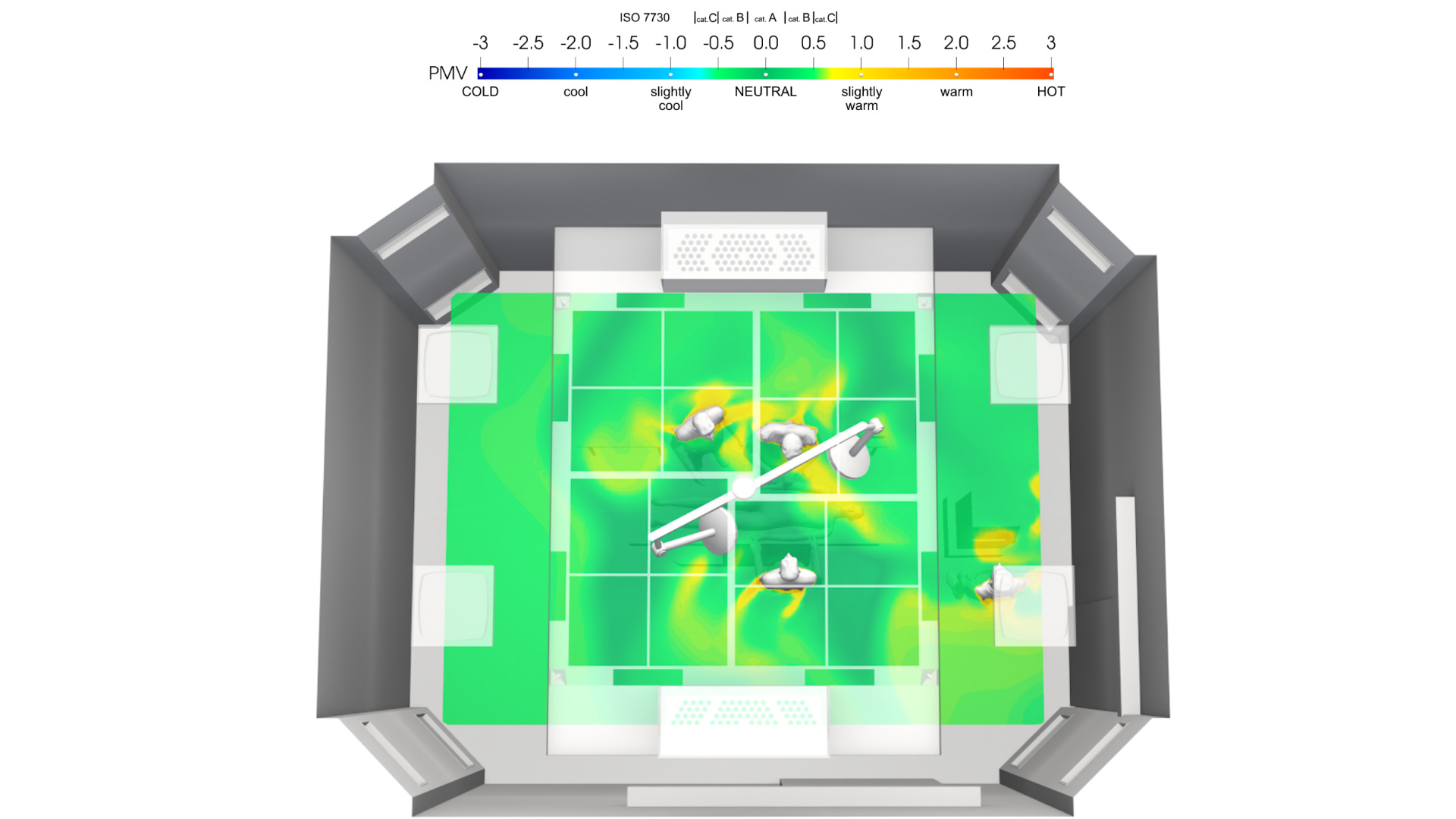
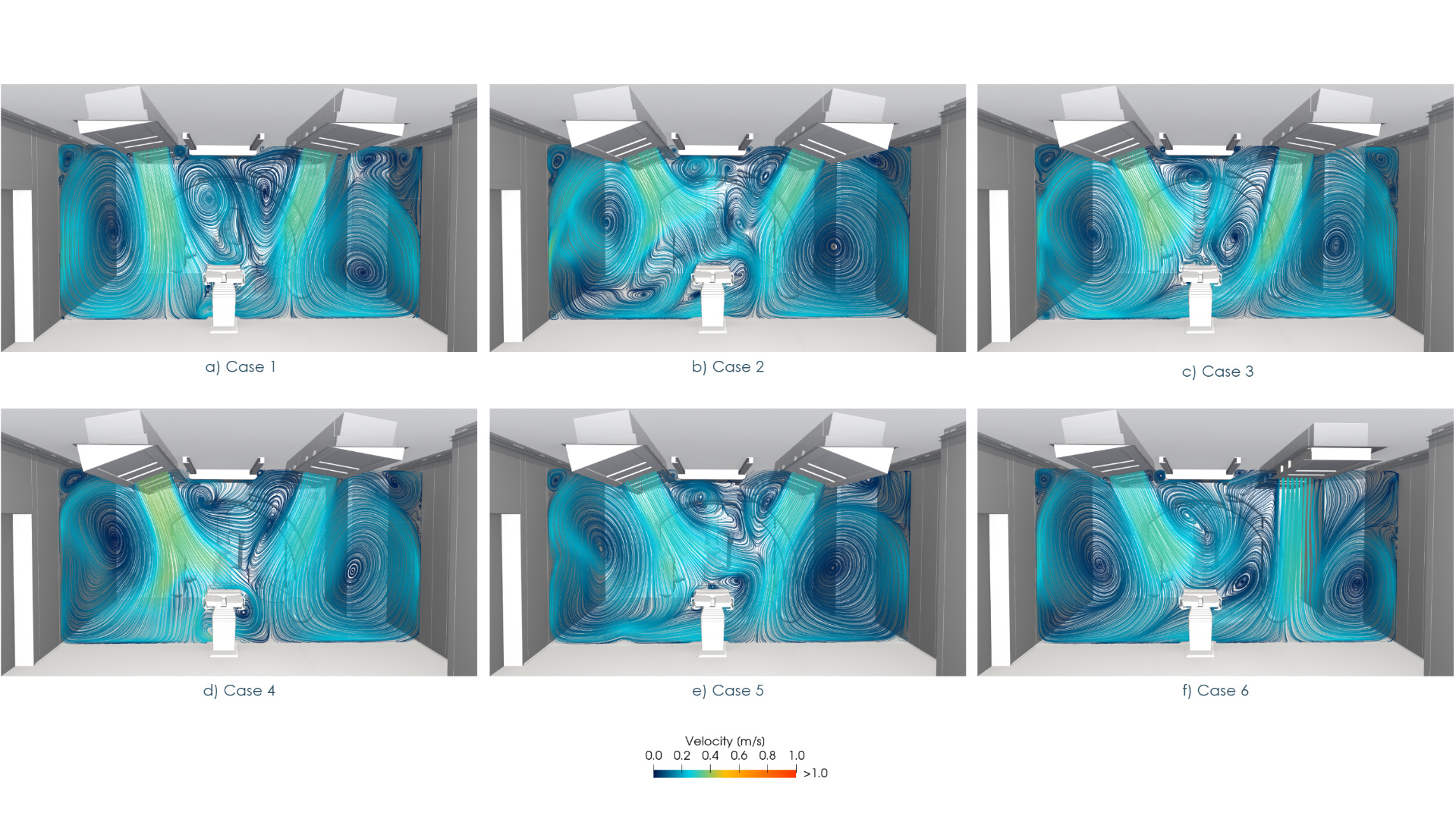
Recovery Test - ISO 14644
“Cleanliness recovery performance after a particle generation event is one of the most important abilities of an installation” [1].


CFD can be used to assess the performance of the operating theatre ventilation system by simulating a recovery test in compliance with ISO 14644.
The recovery test consists in rapidly contaminating the surgical field (clean zone) with smoke, reaching at least a concentration more than 10 times the target cleanliness level [1]. The smoke concentration is then monitored with the ventilation system in operation. The airflow generated by the ventilation system rapidly removes smoke from the clean zone. The recovery performance is then assessed according to ISO 14644 [1] to ensure compliance with recommended guidelines [2].



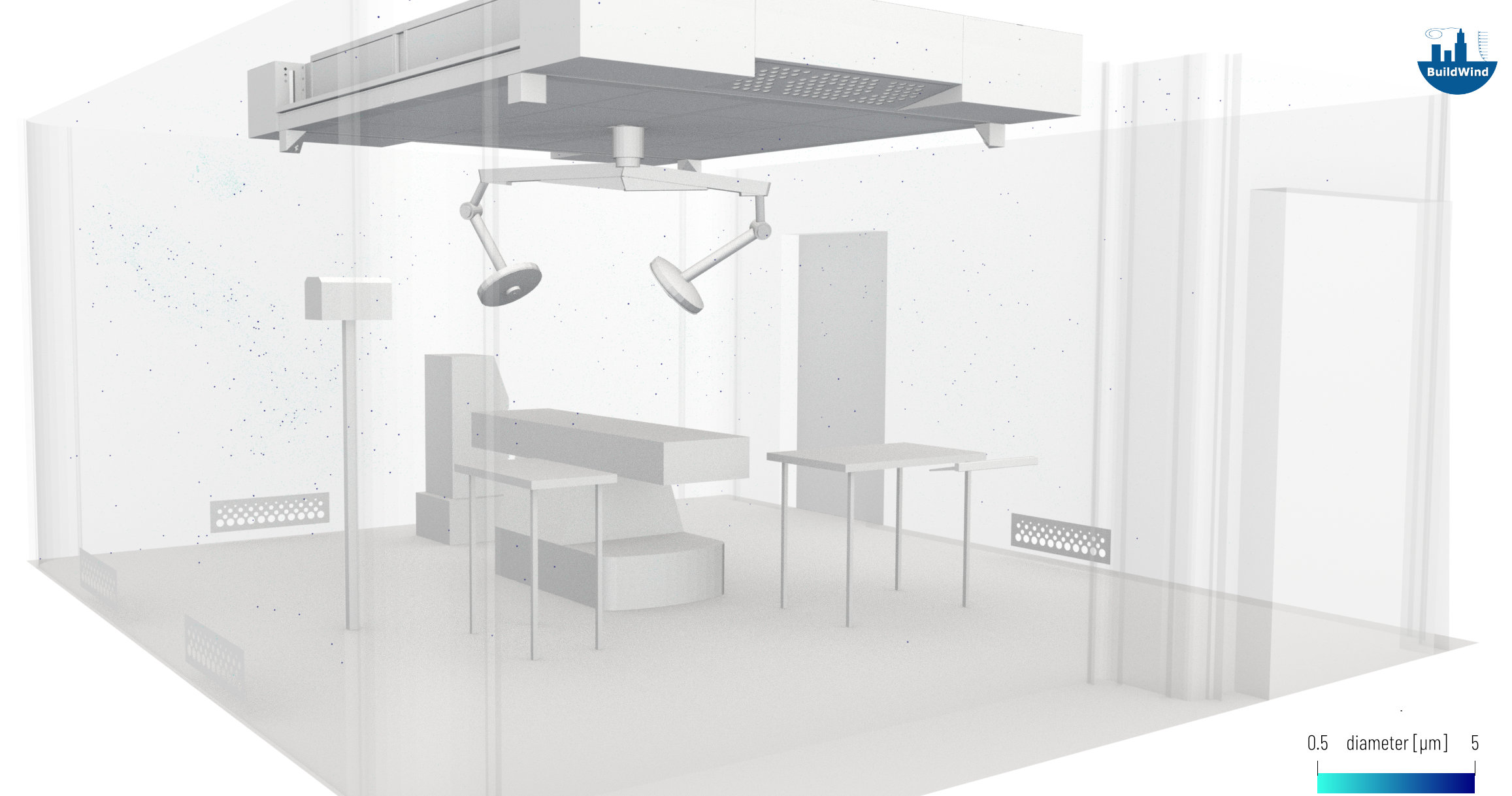
Once a digital model of the operating theatre and its ventilation system has been developed and validated, different operating theatre scenarios can be accurately simulated with Computational Fluid Dynamics. This provides extremely detailed data of airflow, temperature and contaminant concentration, allowing for a better, faster and cost-effective analysis of the ventilation system performance and its possible improvement.
[1] ISO 14644. “Cleanrooms and associated controlled environments”
[2] EU GGMP. The rules governing medicinal products in the European Union – Volume 4 – EU guidelines to good manufacturing practice – medicinal products for human and veterinary use – Annex 1 – Manufacture of sterile medicinal products. European Commission, Brussels, 2022.
BuildWind scientific contributions on these topics
[3] Pallares, J., Fabregat A., Lavrinenko, A., Marques, N., Santos, B., Mosca, G., Obando Vega, P., et al., Computational fluid dynamics challenge on indoor dispersion of pathogen-laden aerosols, Physics of Fluids Vol. 37, Issue 2, Feb 2025.
[4] Obando P. et al. (2022, June 13-15), “Application of computational fluid dynamics simulation to hospital room design to simultaneously predict air quality, airborne pathogen infection risk, and energy efficiency”. European Healthcare Design 2022, London, England.
[5] De Harenne C. et al. (2022, April 23-26), “Prediction of the location of infectious droplets and aerosols in a patient intensive care room”. European Congress of Clinical Microbiology and Infectious Diseases, Lisbon, Portugal.
[6] De Harenne C. et al. (2022, October 22-26), “Prediction of the location of infectious particles in COVID-19 patient intensive care rooms”. 35th Annual Congress of the European Society of Intensive Care Medicine, Paris, France.
[7] Misset B. et al. (2023, February 27-28), “Prévention des infections aux soins intensifs : le COVID-19 dans un service réel”. Journées de l’Architecture en santé, Brussels 2023.
[8] Lucesoli, A., et al., Gestione integrata di pazienti positivi al SARS-CoV2 all’interno di un reparto di Medicina d’Urgenza. 11° Congresso nazionale SIMPIOS. 2023, October 23-25.
[9] Obando Vega, P. et al., Conversion of a regular patient room to negative pressure at Ancona university hospital (Italy). A combined experimental and numerical investigation. Building and Environment, 111557 (2024).

